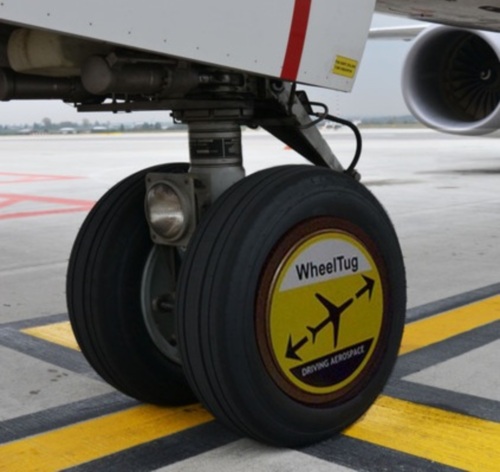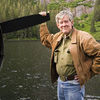Electric_wheels_could_save_airlines_billions_of_dollars_in_fuel_expenses
Dec 5, 2013 12:17:58 #
"Hybrid" drive airplanes... Now, why didnt I think of that??
(Don't answer that...)
http://www.electronicproducts.com/Electromechanical_Components/Motors_and_Controllers/Electric_wheels_could_save_airlines_billions_of_dollars_in_fuel_expenses.aspx
Phil
(Don't answer that...)
http://www.electronicproducts.com/Electromechanical_Components/Motors_and_Controllers/Electric_wheels_could_save_airlines_billions_of_dollars_in_fuel_expenses.aspx
Phil
K.I.S.S...Genius!

Dec 5, 2013 12:30:51 #
How cool is that!! Thanks, Phil, good to know that there is some creativity still left in the country!
Dec 5, 2013 13:42:00 #
HEART wrote:
How cool is that!! Thanks, Phil, good to know that there is some creativity still left in the country!
The huge mining trucks have used electric wheel motors for decades. The engine is there merely to run the generator.
I would think with large aircraft there are other reasons to start the engines before it's in place for takeoff. Doesn't it give the pilot an opportunity to make sure all are operating properly, are warmed up and ready for the full thrust? I could see the benefit on landing, but takeoff I believe needs to have the engines running some time before.
Dec 5, 2013 16:09:01 #
Lmarc wrote:
The huge mining trucks have used electric wheel motors for decades. The engine is there merely to run the generator.
I would think with large aircraft there are other reasons to start the engines before it's in place for takeoff. Doesn't it give the pilot an opportunity to make sure all are operating properly, are warmed up and ready for the full thrust? I could see the benefit on landing, but takeoff I believe needs to have the engines running some time before.
I would think with large aircraft there are other reasons to start the engines before it's in place for takeoff. Doesn't it give the pilot an opportunity to make sure all are operating properly, are warmed up and ready for the full thrust? I could see the benefit on landing, but takeoff I believe needs to have the engines running some time before.
Large or small, the time needed to go through the run up is mere minutes - much shorter than the time spent idling and taxiing in a typical class B and C airport.
Dec 5, 2013 16:51:10 #
PrairieSeasons wrote:
Large or small, the time needed to go through the run up is mere minutes - much shorter than the time spent idling and taxiing in a typical class B and C airport.
You are right! :thumbup:
Dec 6, 2013 13:15:56 #
PrairieSeasons wrote:
Large or small, the time needed to go through the run up is mere minutes - much shorter than the time spent idling and taxiing in a typical class B and C airport.
Jet engines don't require a "run up."
Dec 6, 2013 13:33:58 #
phil7782 wrote:
"Hybrid" drive airplanes... Now, why didnt I think of that??
(Don't answer that...)
http://www.electronicproducts.com/Electromechanical_Components/Motors_and_Controllers/Electric_wheels_could_save_airlines_billions_of_dollars_in_fuel_expenses.aspx
Phil
(Don't answer that...)
http://www.electronicproducts.com/Electromechanical_Components/Motors_and_Controllers/Electric_wheels_could_save_airlines_billions_of_dollars_in_fuel_expenses.aspx
Phil
Nor feasible.
Dec 6, 2013 14:05:36 #
Lmarc wrote:
The huge mining trucks have used electric wheel motors for decades. The engine is there merely to run the generator.
I would think with large aircraft there are other reasons to start the engines before it's in place for takeoff. Doesn't it give the pilot an opportunity to make sure all are operating properly, are warmed up and ready for the full thrust? I could see the benefit on landing, but takeoff I believe needs to have the engines running some time before.
I would think with large aircraft there are other reasons to start the engines before it's in place for takeoff. Doesn't it give the pilot an opportunity to make sure all are operating properly, are warmed up and ready for the full thrust? I could see the benefit on landing, but takeoff I believe needs to have the engines running some time before.
8-) 8-) 8-) In past generation aircraft, a "warm up" period was required. Not so today. When 4 engined aircraft taxied they sometimes had to keep outboard engines static because they overhung the taxiway. Pilots do not like to operate turbines over unimproved or unpaved surfaces because they tend to inhale huge quantities of air. If that air contains solid objects turbine engines are at risk for damage. I have spent many years of my life flying, and I have never heard of a "slightly" damaged turbine engines. They are extremely expensive to replace. Costs are a major concern of airlines. The items mentioned in this article could be great savings for operators. I notice this organization is aiming at the 737, a relative small airplane at 200,000 gr. wt. How well can it perform trying to push a 747 or AirBus 380 at weights approaching 1 million pounds? That is a horse of a different color. The bottom line might give cause to the operators to help in the development. I find myself asking the question as to why Boeing and AirBus haven't been involved with a project of this nature. After all Boeing is the definitive bottom line. If this piece of equipment works as advertised Boeing and/or AirBus will be in that line of business, even if they buy this company.
Dec 6, 2013 15:33:05 #
rwill19050
Loc: Witney, Oxfordshire, UK
I see a major problem, the one where sitting in the cockpit you can not see behind you...... :shock:
Dec 6, 2013 16:31:47 #
rwill19050 wrote:
I see a major problem, the one where sitting in the cockpit you can not see behind you...... :shock:
8-) 8-) 8-) During push back the only control the cockpit crew has is the braking system. Everything else is done by the outside crew. :lol: :lol: :lol:
Dec 6, 2013 21:44:52 #
davidrb wrote:
8-) 8-) 8-) During push back the only control the cockpit crew has is the braking system. Everything else is done by the outside crew. :lol: :lol: :lol:
DC-9/MD-80 aircraft that I've seen at ONT (Ontario, CA) use their reversing buckets opened and increased thrust to back out of the gate area. Example can be seen at:
http://www.youtube.com/watch?v=BOCvgpyfZEg
A flag man still has to guide the pilot back and watch for obstacles.
Phil
Dec 7, 2013 02:27:35 #
Canonuser
Loc: UK and South Africa
Why, when aircraft manufactures are doing all they can to reduce weight, would they want to install such heavy items to duplicate something they pretty much already have and which then has to be hauled round in the air for thousands of miles for absolutely no benefit, but burning up additional precious fuel?
Dec 7, 2013 03:04:24 #
Canonuser wrote:
Why, when aircraft manufactures are doing all they can to reduce weight, would they want to install such heavy items to duplicate something they pretty much already have and which then has to be hauled round in the air for thousands of miles for absolutely no benefit, but burning up additional precious fuel?
Being involved in Aircraft manufacture my whole life...that is the question I'm asking myself.
Dec 7, 2013 10:22:23 #
Canonuser wrote:
Why, when aircraft manufactures are doing all they can to reduce weight, would they want to install such heavy items to duplicate something they pretty much already have and which then has to be hauled round in the air for thousands of miles for absolutely no benefit, but burning up additional precious fuel?
If the benefit outweighs the cost, they will try it. At 300 pounds, I would suspect that it's worth a try.
Dec 7, 2013 10:30:14 #
Canonuser
Loc: UK and South Africa
I suspect the benefit does not outweigh the cost or it would have been implemented as I'm sure skilled designers have already checked this out.
If you want to reply, then register here. Registration is free and your account is created instantly, so you can post right away.







